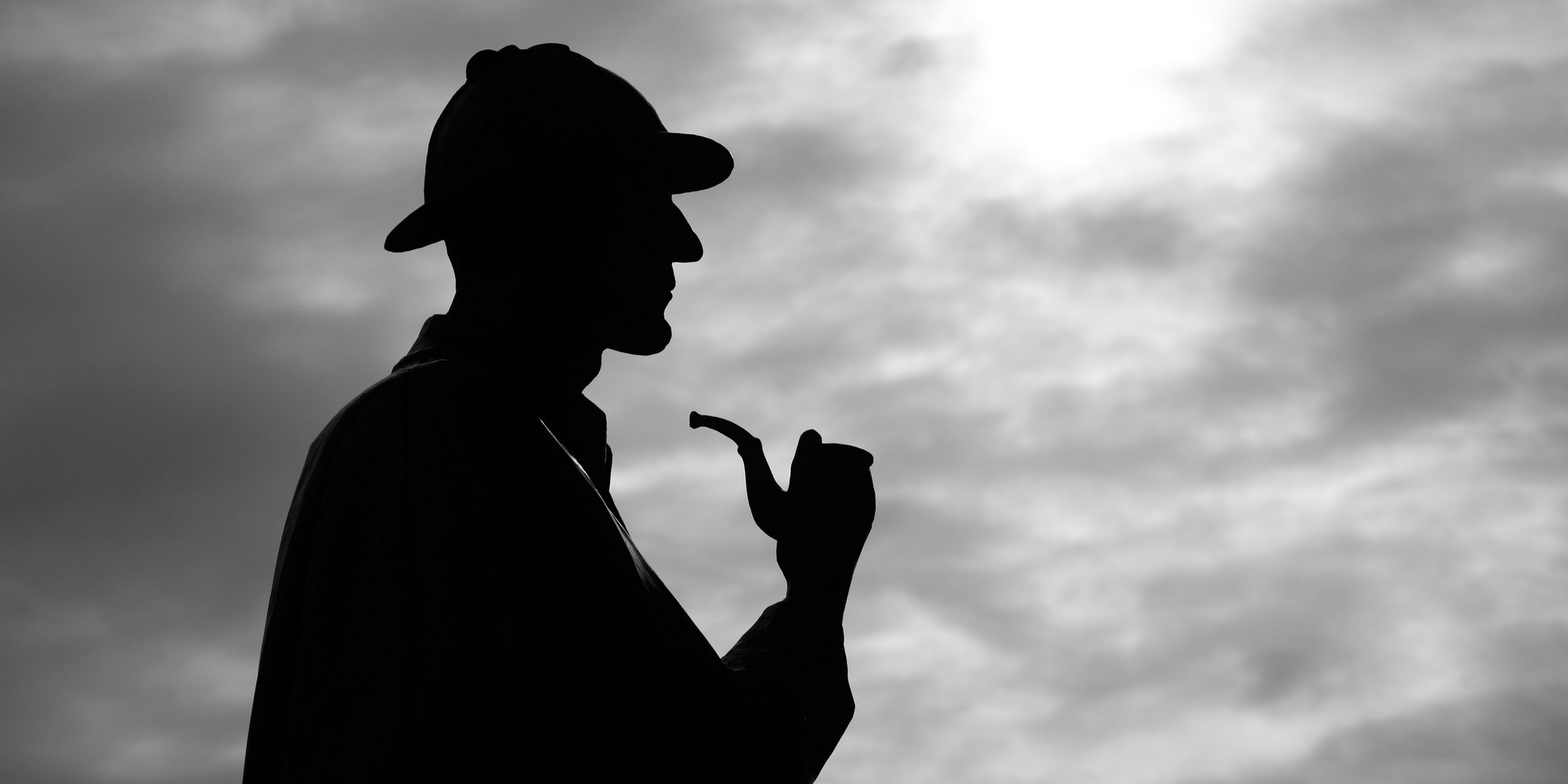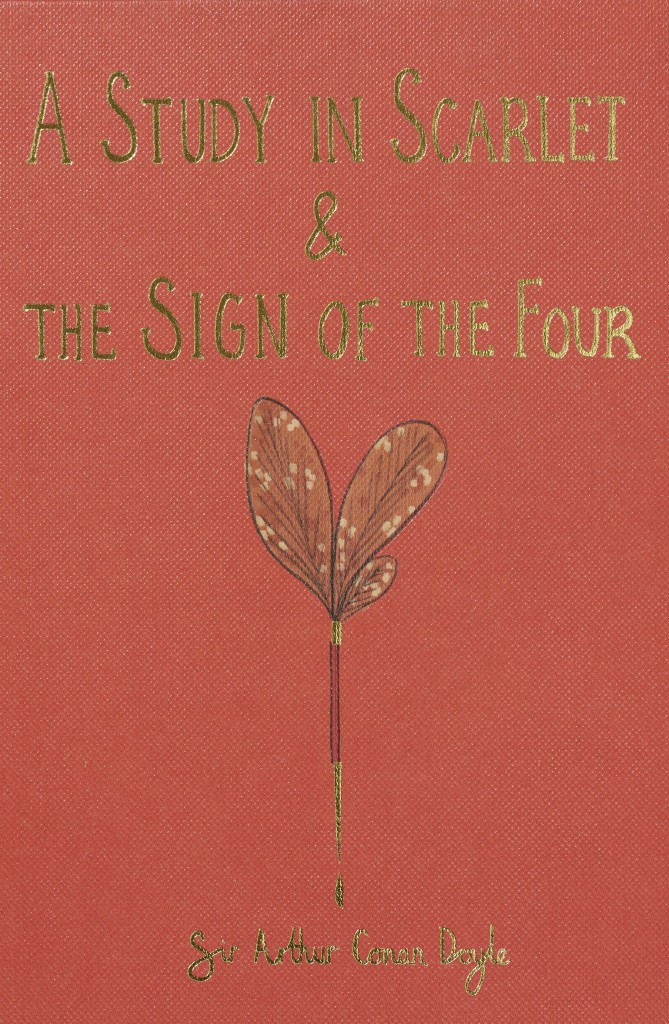
A Study in Scarlet / The Sign of the Four
In the first of a four-part series, David Stuart Davies begins with the novel that introduced the world’s first consulting detective.
In 1886 Arthur Conan Doyle was an impoverished doctor with a small practice in Southsea. He had a smart brass plaque outside but very few patients inside. Apart from his medical concerns, Arthur, then twenty-seven had literary ambitions. In the longueurs between patients, he tried his hand at constructing a detective story, one in which the sleuth would reach his conclusions by deductive reasoning and not by accident. It was during these early scribblings that he began to pull together various threads from his past influences. From boyhood, Edgar Allan Poe’s Auguste Dupin, the rational thinker from Murders in the Rue Morgue had been one of his heroes. He also admired ‘the neat dovetailing’ of the plots of Gaboriau’s crime novels. And then there was Dr Joseph Bell, who had been one of Doyle’s tutors when he was studying medicine at Edinburgh University. Bell had the most remarkable powers of observation and prided himself that when he looked at a patient he could tell not only their disease but very often also their occupation and place of residence. Doyle observed in his autobiography, Memories and Adventures (1924) that if Bell ‘were a detective he would surely reduce this fascinating unorganised business [of detective work] to something nearer an exact science’.
Holmes’ appearance was also influenced by Bell, who was tall and thin and, as Doyle observed, had an ‘eagle face.’
All these influences swirled around in Doyle’s brain, mixing with his own unique elixir of romance and dramatic imagination, which had been fostered by his mother when he was a child. Gradually his central character began to materialise, but he believed it would be inappropriate and awkward for the detective to relate his own investigations. He would need a storyteller, someone who was ‘a commonplace comrade’, an educated man of action who could join in the exploits and narrate them. Dr John H. Watson was created to fill this role. So now Arthur Conan Doyle had his puppets and began work on his first detective novel: A Study in Scarlet.
Doyle’s satisfaction with the finished result was not matched by the various publishers he approached with the manuscript. After collecting a large pile of rejection slips, reluctantly he accepted the offer of a mere £25 from Ward, Lock & Company who published Beeton’s Christmas Annual, 1887. For this niggardly sum, Doyle had to sign away the copyright of the novel. He never earned another penny from A Study in Scarlet.
In this first story, Doyle created all the elements of the Sherlock Holmes world that are still familiar and greatly loved today. Apart from the main protagonists, we are introduced to the cosy sitting room at 221B Baker Street and the landlady, Mrs Hudson. And there is also the world of Victorian London with its gas-lit chambers, thick fogs, cobbled streets and Hansom cabs. At the centre of this rich tapestry was the charismatic and enigmatic figure of Sherlock Holmes, the world’s first consulting detective, the ultimate crusader against crime and criminals. He was the first superhero, one who had no need to recourse to supernatural aids to achieve his ends; he just used his brain.
It is in A Study in Scarlet that Doyle presents us with the fundamental elements that make up this fascinating character. The author establishes Holmes’ mystifying detective brilliance in the early pages. When he and Watson first meet, Holmes proclaims, ‘You have been in Afghanistan, I perceive.’ He later explains in detail the rapid series of deductions that brought him to this conclusion. However, Sherlock Holmes is more than just an armchair observer. He is also a man of action, actively pursuing clues and leads in an energetic fashion. This combination of cerebral brilliance and physical dynamism makes him the ideal hero.
While the plot is cunning, the real joy and the strength of this novel lies in the introduction of Holmes and Watson to us and to each other and those dark early scenes when a corpse is discovered in a derelict house in Brixton Road, where the murderer has scrawled the letters RACHE on the wall in blood. It is a scene that has rarely been bettered in crime fiction.
The publication of A Study in Scarlet caused barely a ripple of excitement with the reading public and the career of Sherlock Holmes could have ended there had it not been for John Marshall Stoddart, the managing director of the American magazine, Lippincott’s. He had enjoyed A Study in Scarlet and was well aware of the growing interest in the detective story genre. He invited Arthur Conan Doyle, along with another writer, to lunch at Langham’s hotel in London with a view to engaging them both to write stories for the launch of the English edition of his magazine. The other writer was Oscar Wilde.
It must have been a good lunch because both men agreed to write books for the new magazine. Wilde’s opus was The Picture of Dorian Gray, while Doyle’s became the second Sherlock Holmes adventure, The Sign of the Four. Embarking on this new novel, Doyle was a more confident and practised author than he had been when he had written A Study in Scarlet and he set about performing two tasks: re-establishing Holmes in the consciousness of the reading public and, while doing so, providing further embellishments to add colour and interest to the character. Doyle had been very impressed and somewhat in awe of Oscar Wilde when he met him at the Langham lunch and he came away with the idea of imbuing Holmes with some of Wilde’s extravagant and outré behaviour. One daring aspect that he introduced in The Sign of the Four was Holmes’ addiction to drugs. This is a dramatic departure from the Holmes of the first novel. There was no hint of such an addiction in A Study in Scarlet.
It is interesting to note that there are echoes of Oscar Wilde in the character of Thaddeus Sholto, whose house is described as ‘an oasis of art in the howling desert in South London’ and who states with typical Wildean wit that ‘there is nothing more unaesthetic than a policeman.’
Watson, too, developed further in The Sign of the Four. He was more outspoken and emotional than he was in the first novel and his romantic feelings for Mary Morstan bring a further roundness to his persona. The structure of The Sign of the Four is similar to that of the first novel in that there is a flashback section in the second half recounting the events up to Sherlock Holmes’ involvement with the mystery, but this is considerably shorter than in A Study in Scarlet – allowing Holmes to remain centre stage for longer – and is handled with greater skill.
As with A Study in Scarlet, the main plot deals with revenge, which this time centres on the fabulous Agra treasure and the treachery surrounding its daring theft.
In A Study in Scarlet and The Sign of the Four, you have the rock on which was founded the great legend of Sherlock Holmes and a basic template which scores of crime writers have used since when creating their own idiosyncratic sleuths. These exciting and entertaining novels have never lost their appeal and never will as long as readers are prepared to let slip the chains of their imagination and join Holmes and Watson on that furious cab ride in the night, through the fog to danger, mystery and the thrilling unknown.
Images: Statue of Sherlock Holmes outside Baker Street tube station, Marylebone, London, UK Contributor: Londonstills.com / Alamy Stock Photo
Beeton’s Christmas Annual for 1887 Contributor: Pictorial Press Ltd / Alamy Stock Photo
Books associated with this article

A Study in Scarlet & The Sign of the Four
Sir Arthur Conan Doyle
